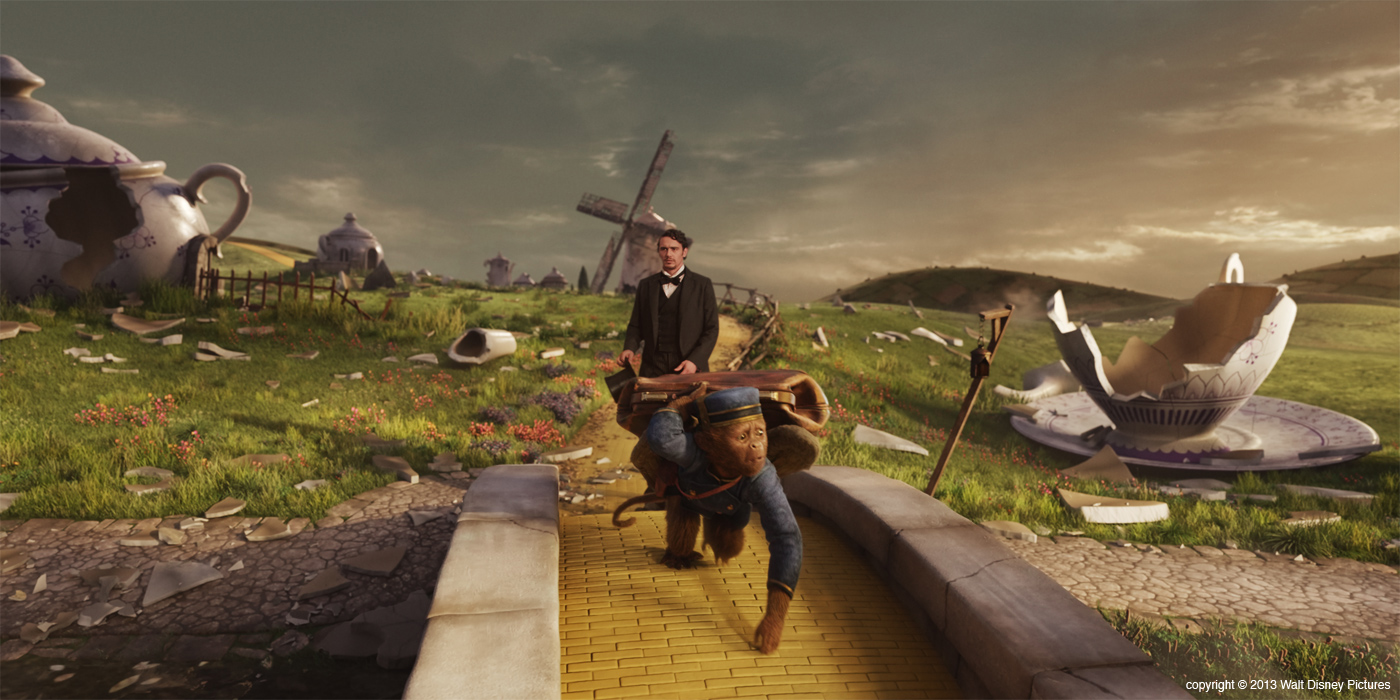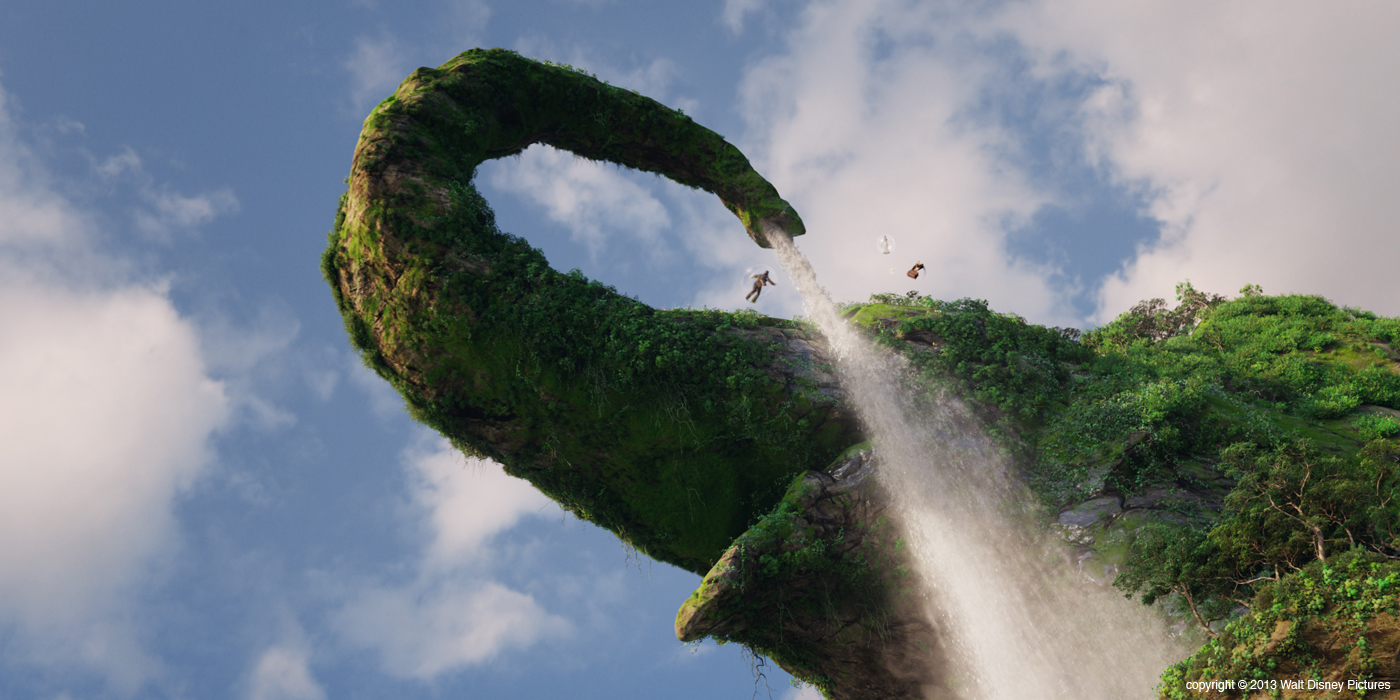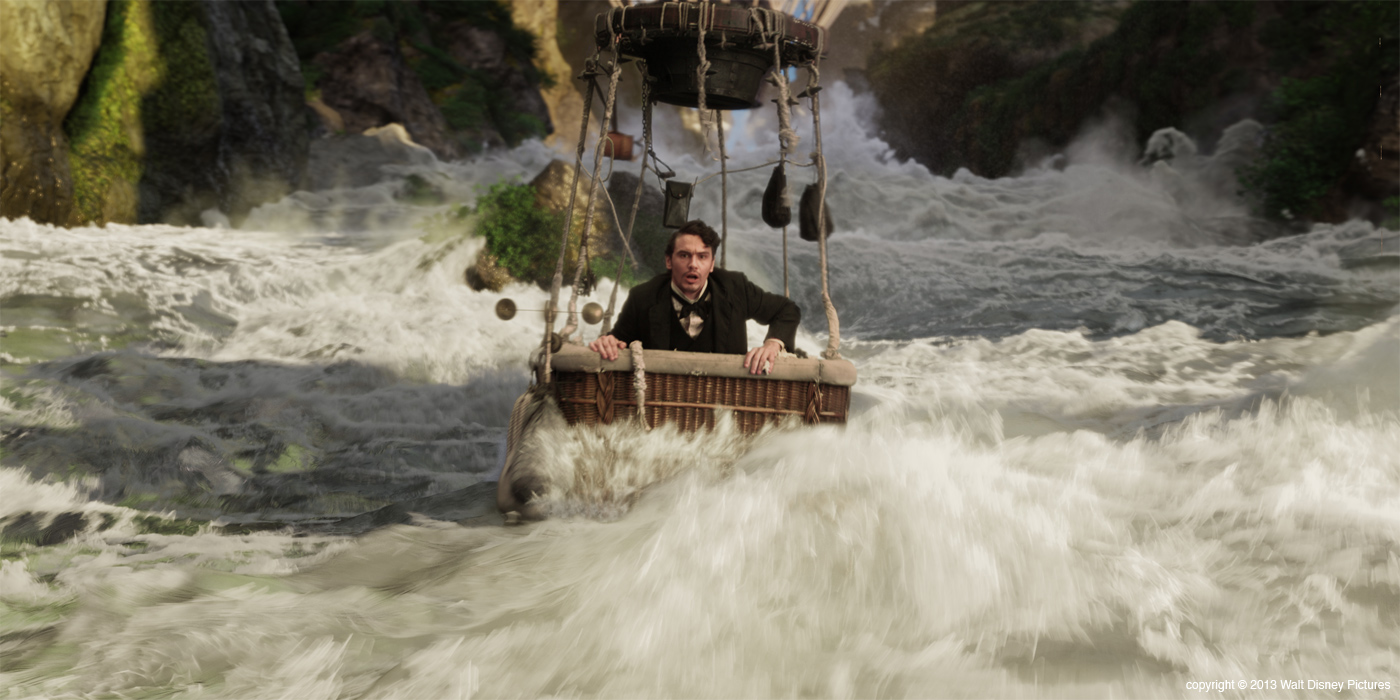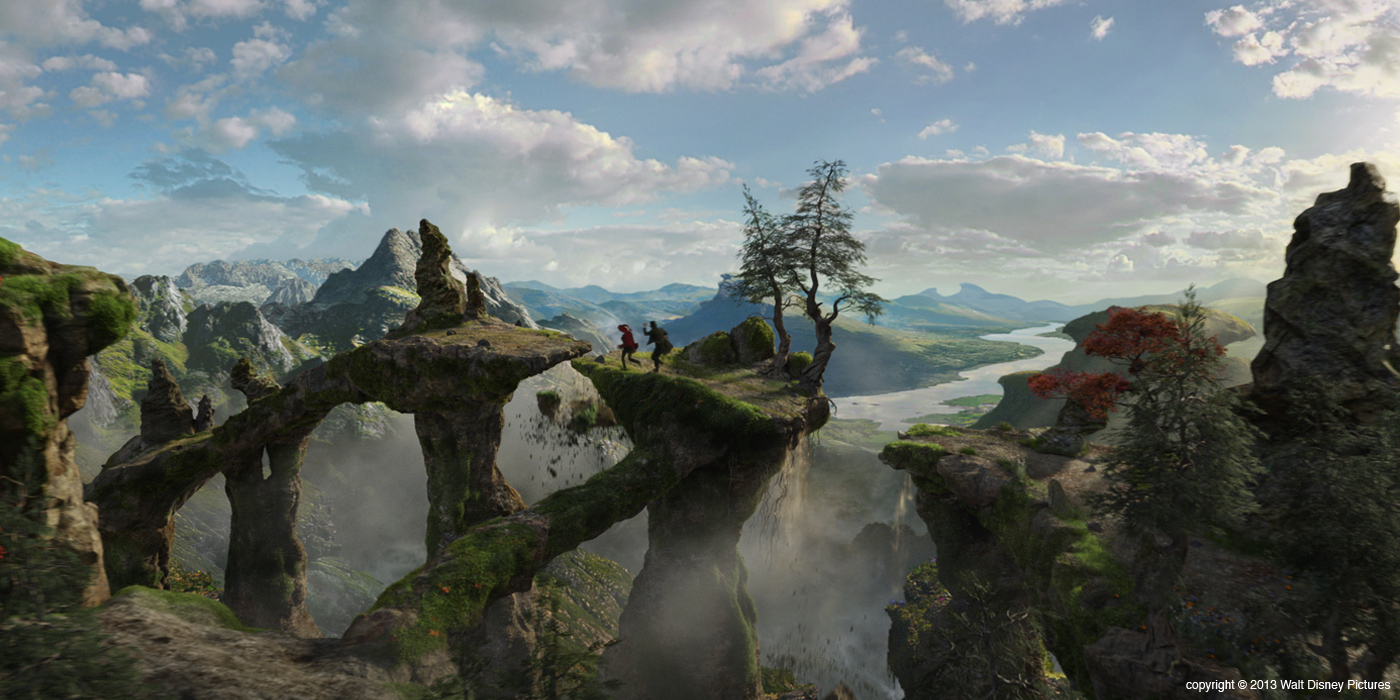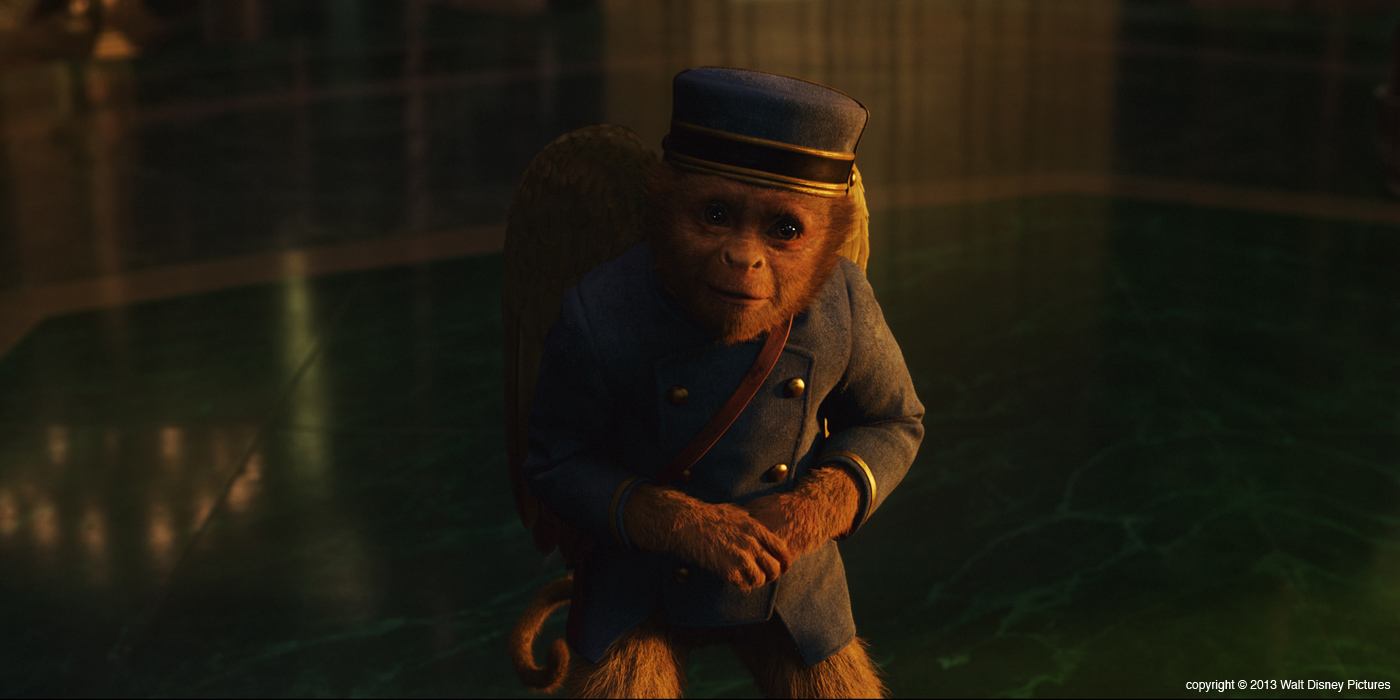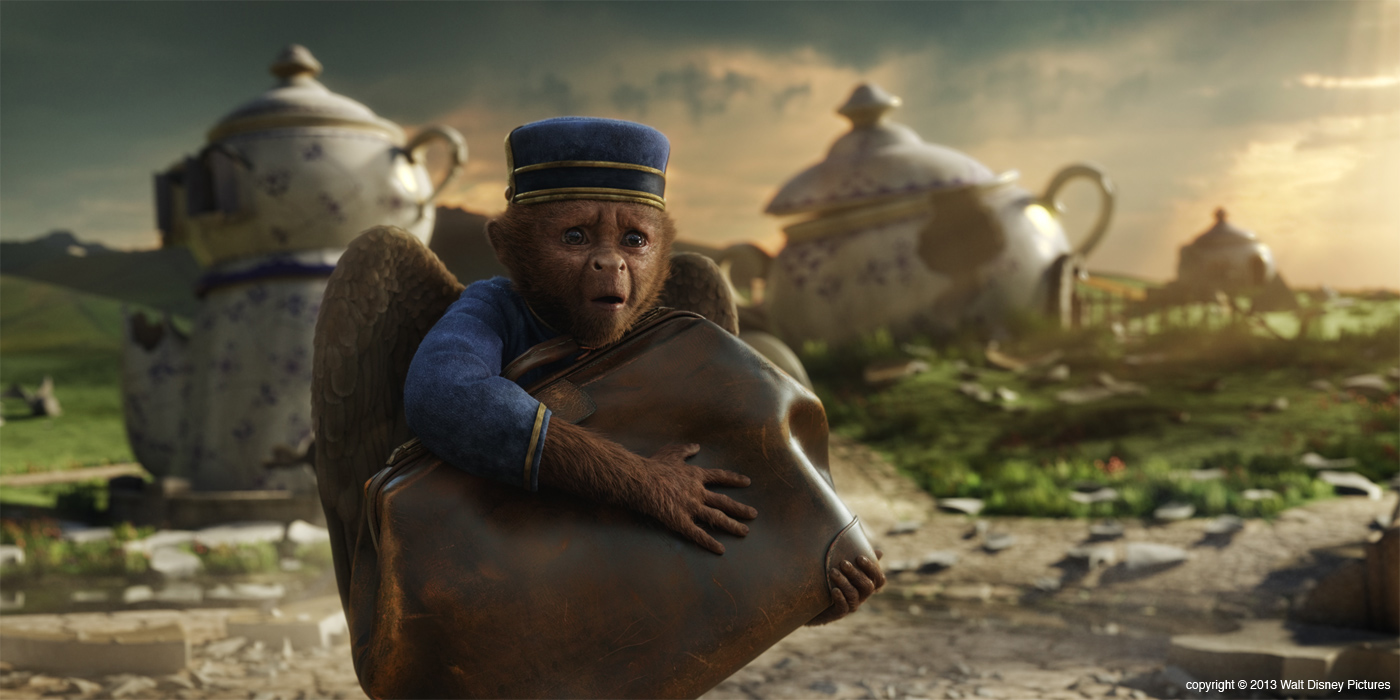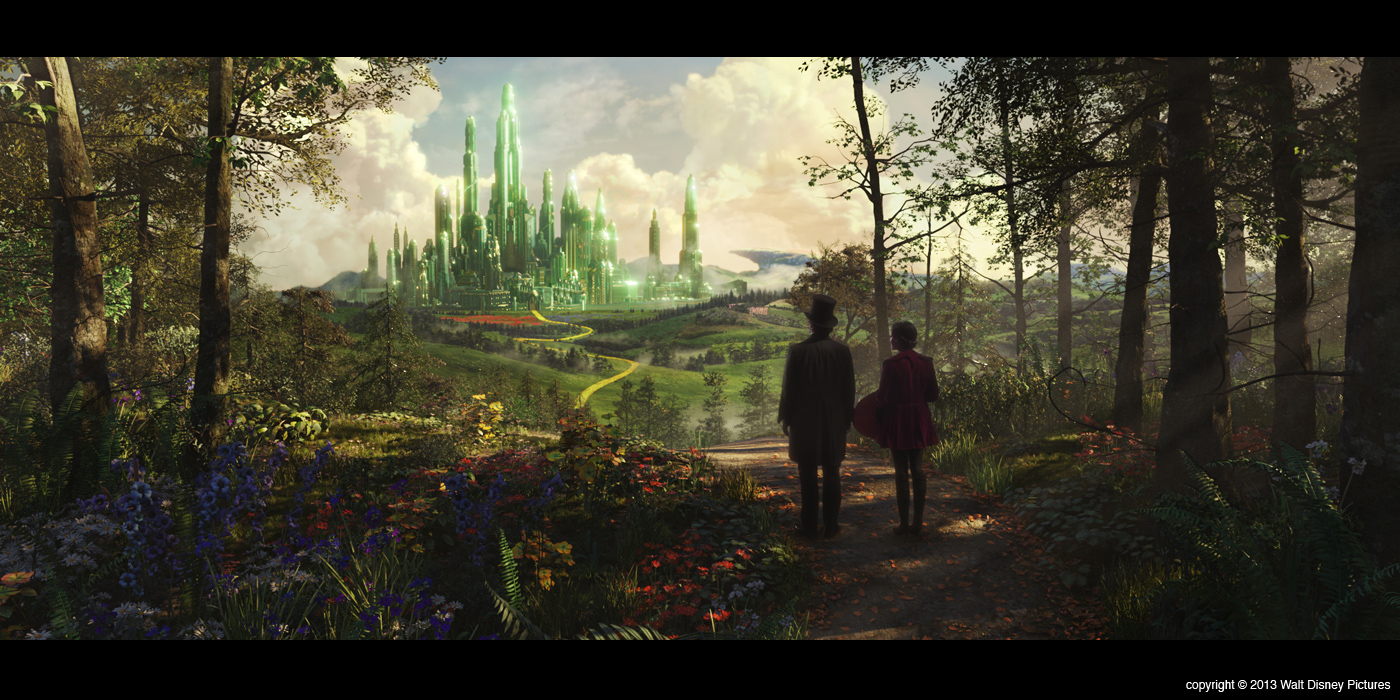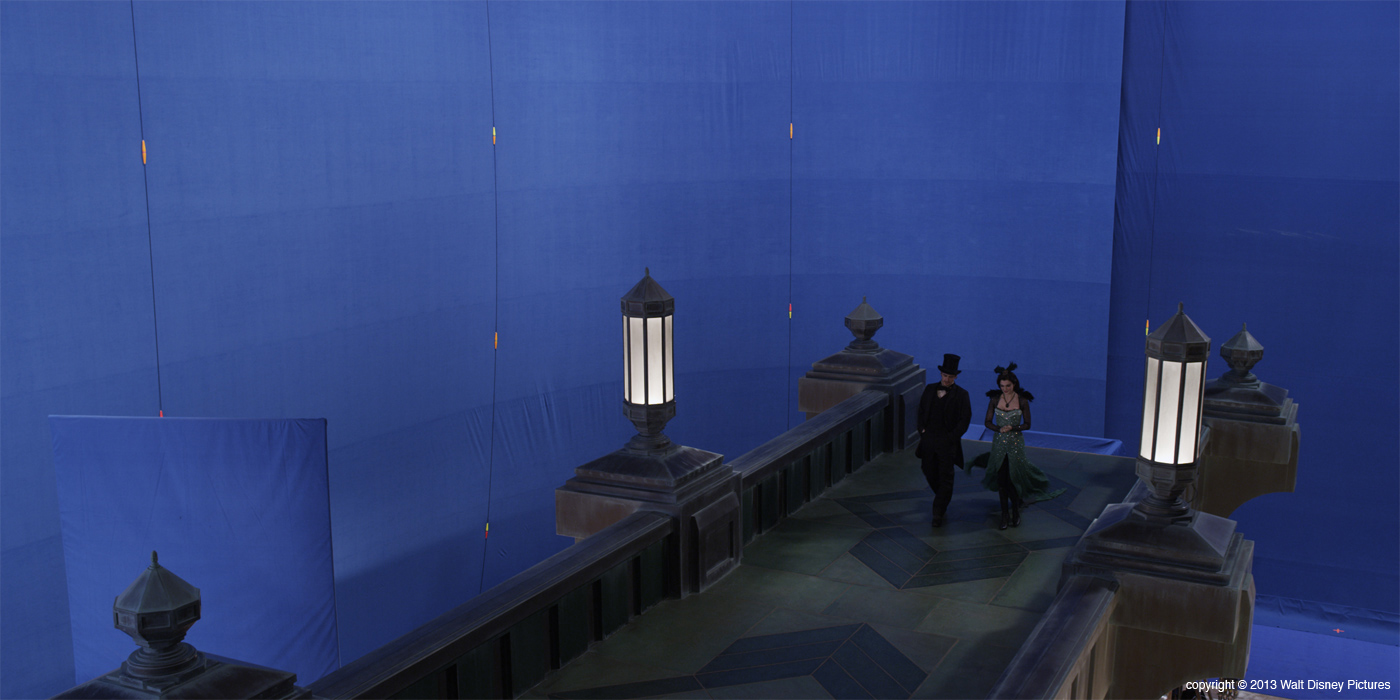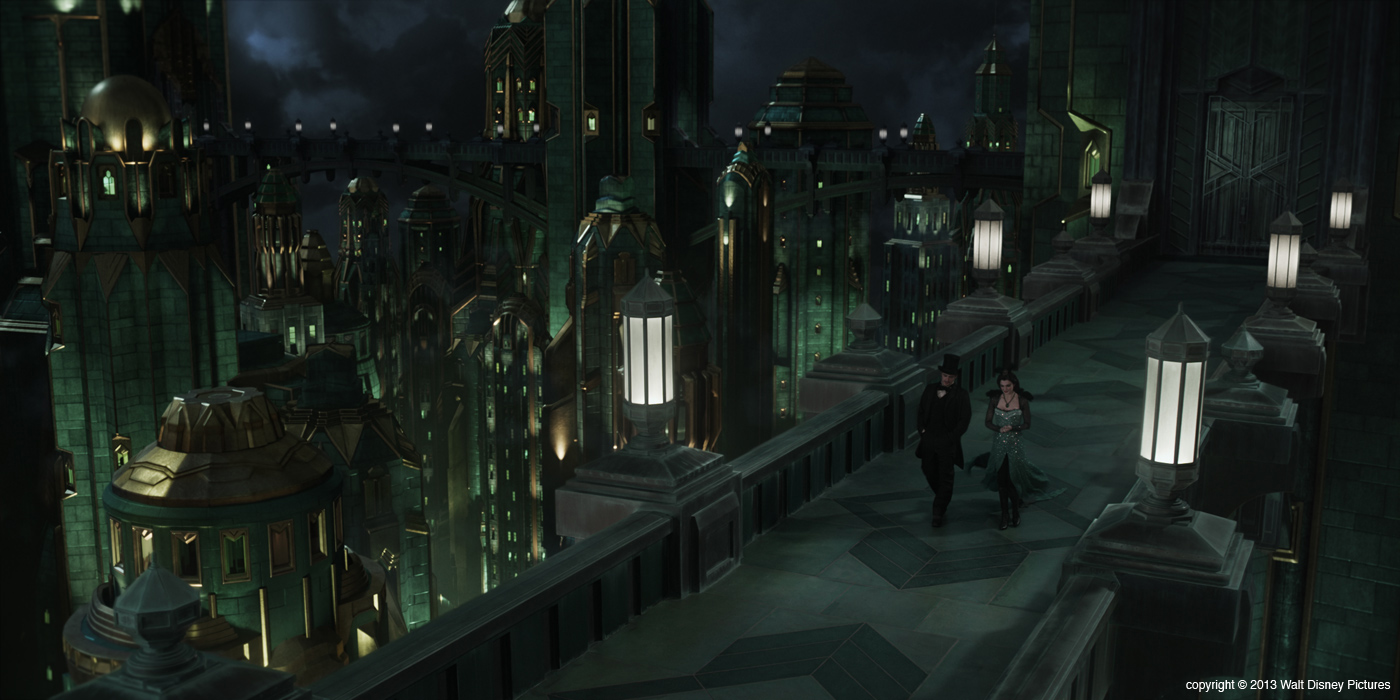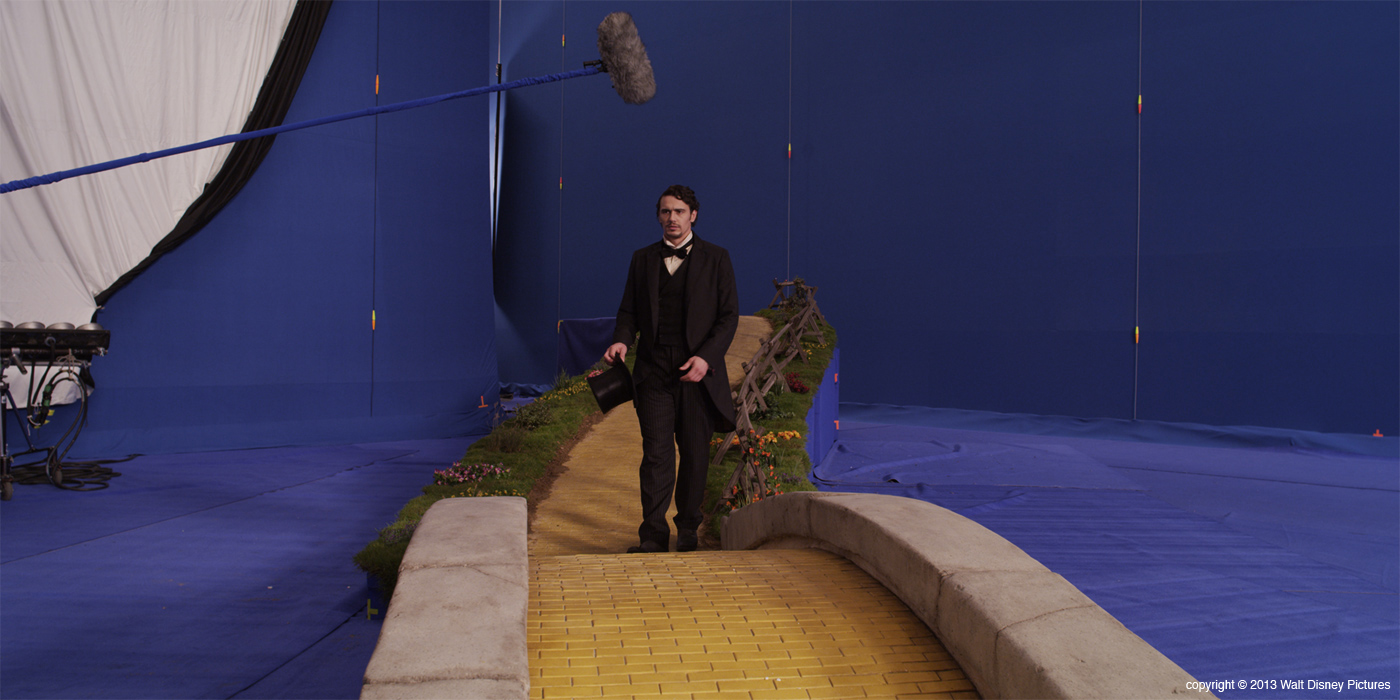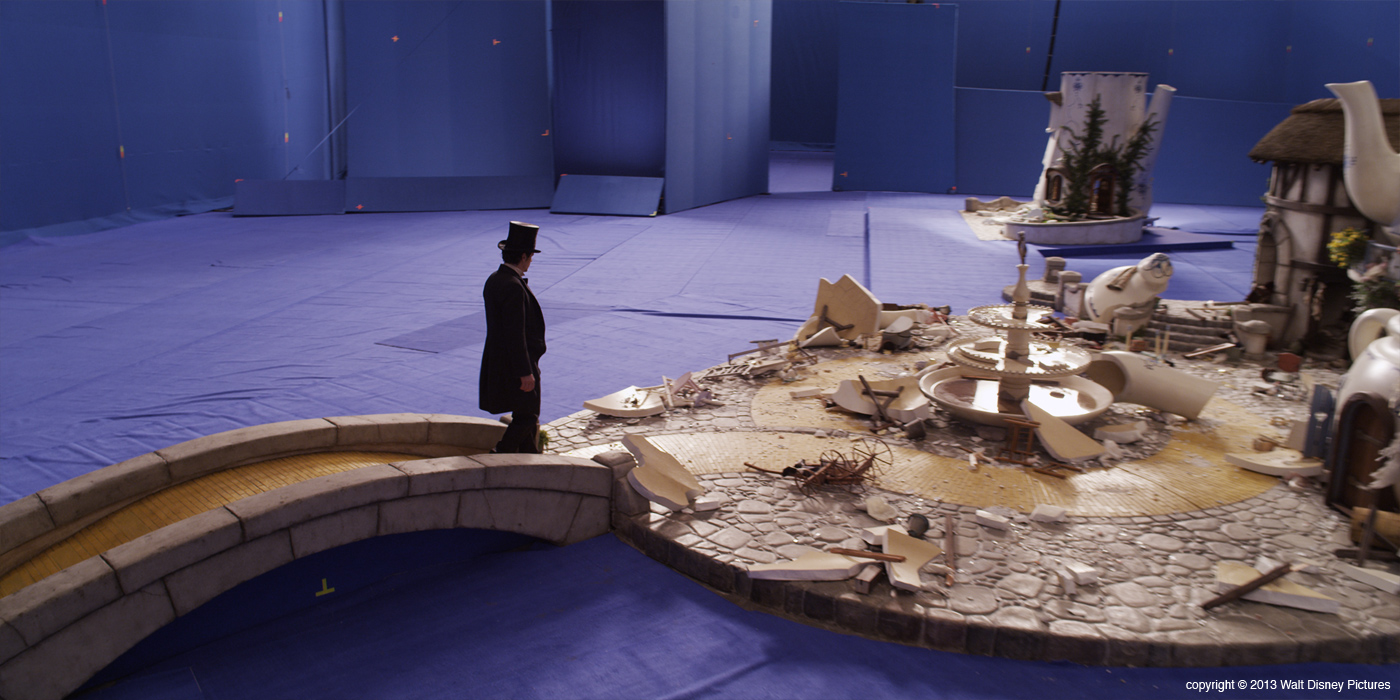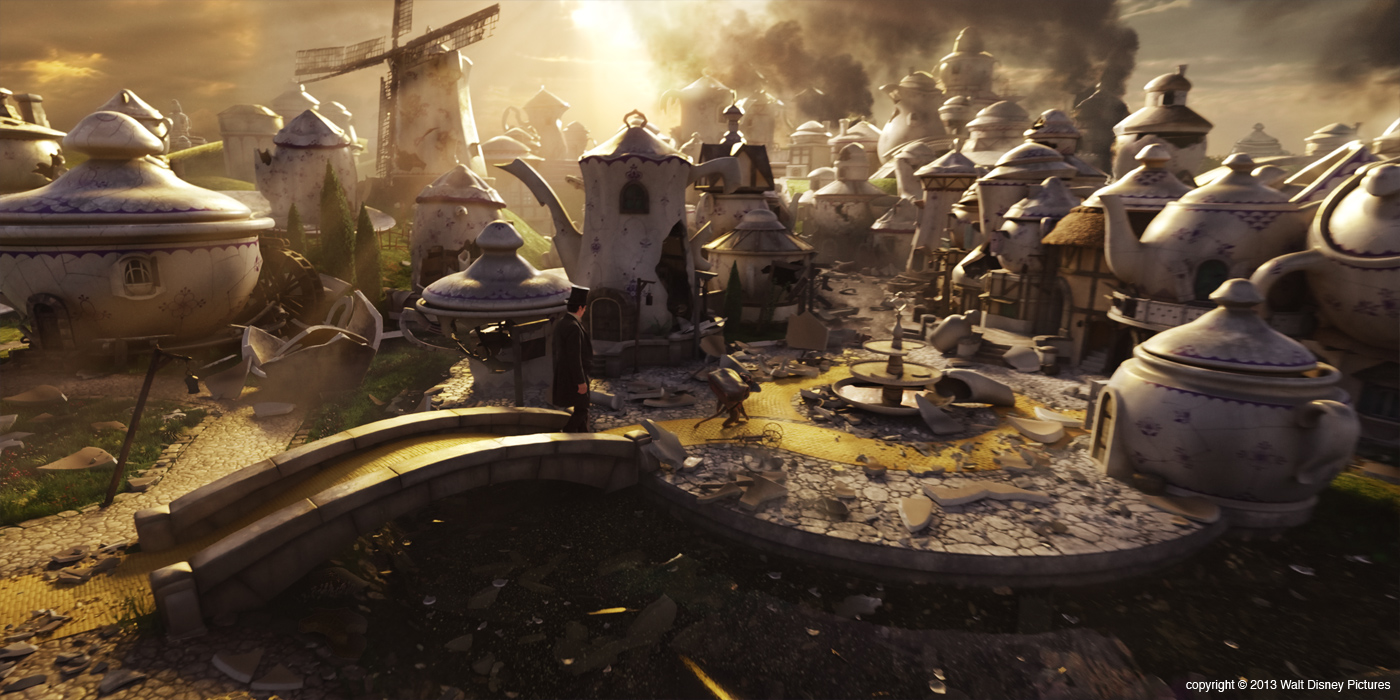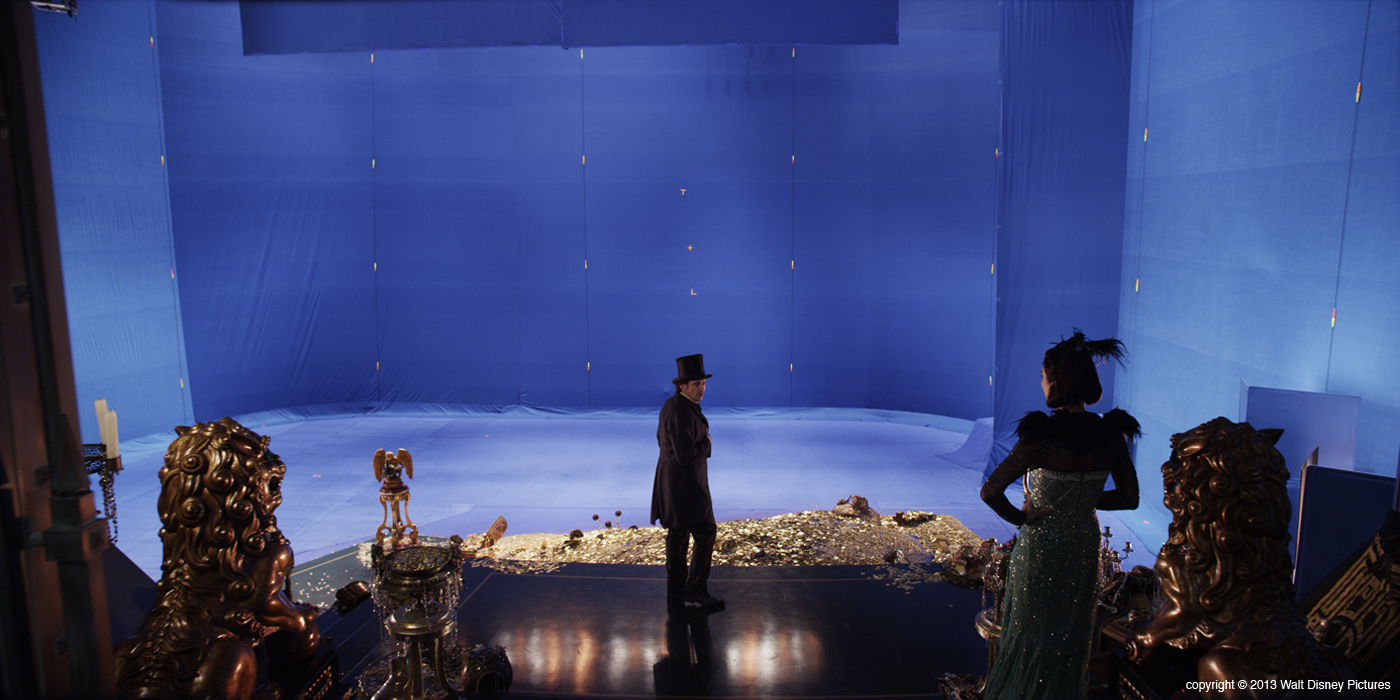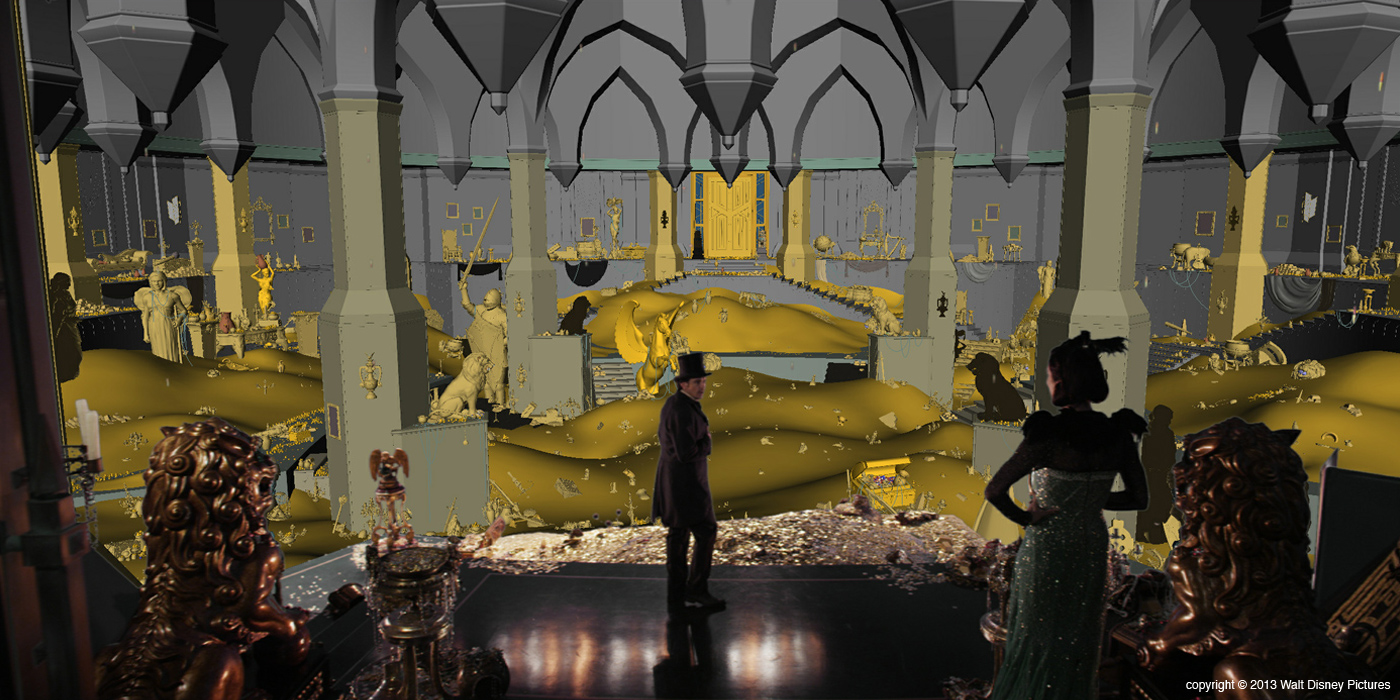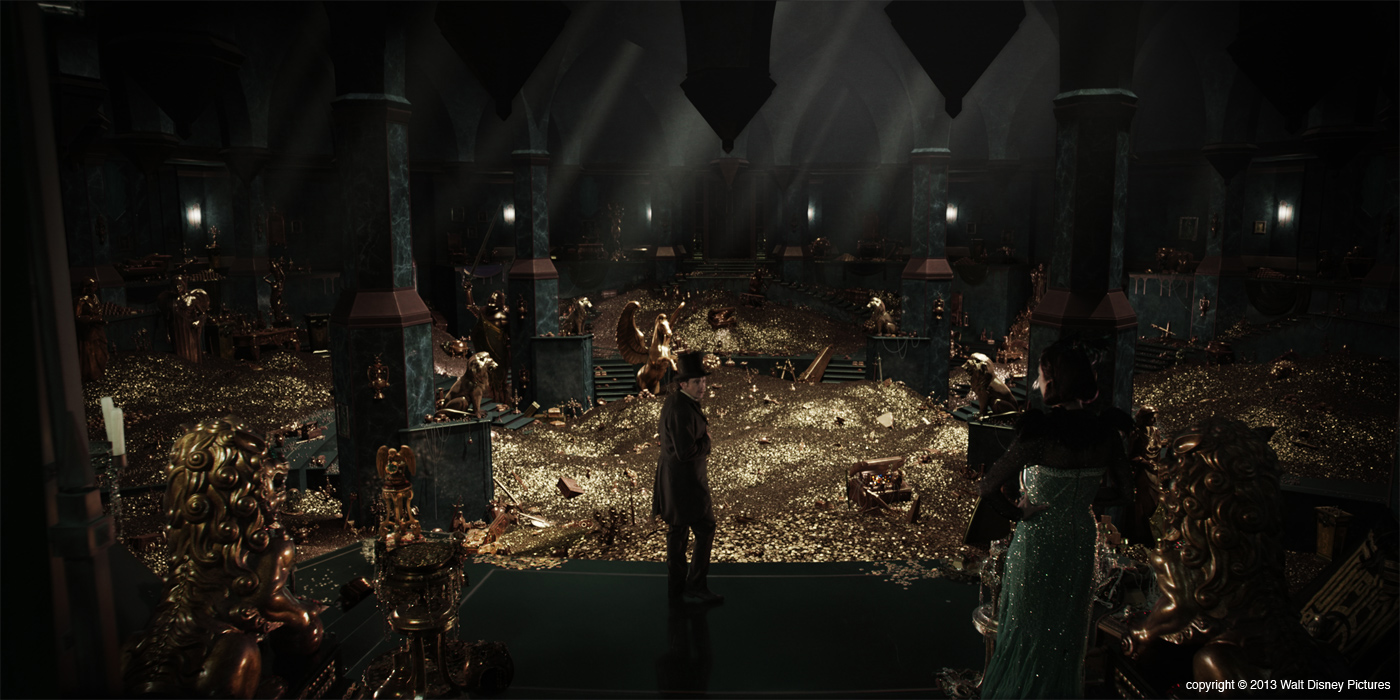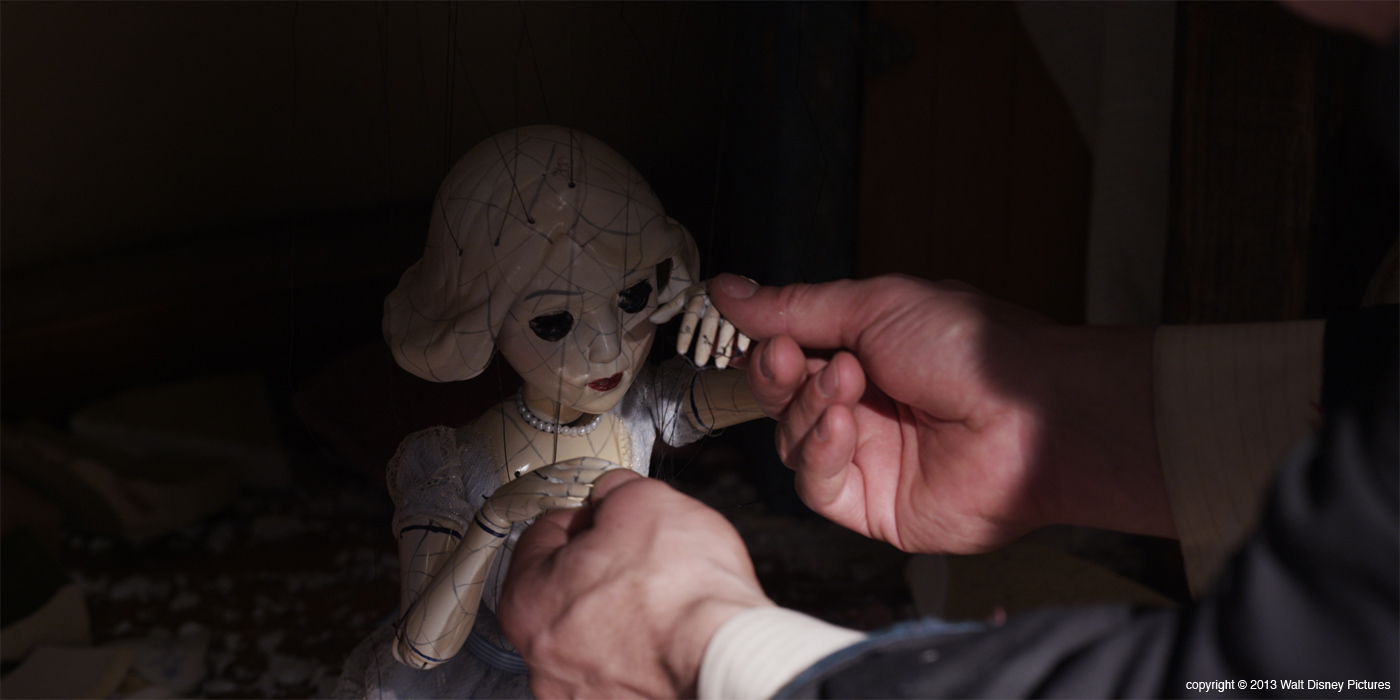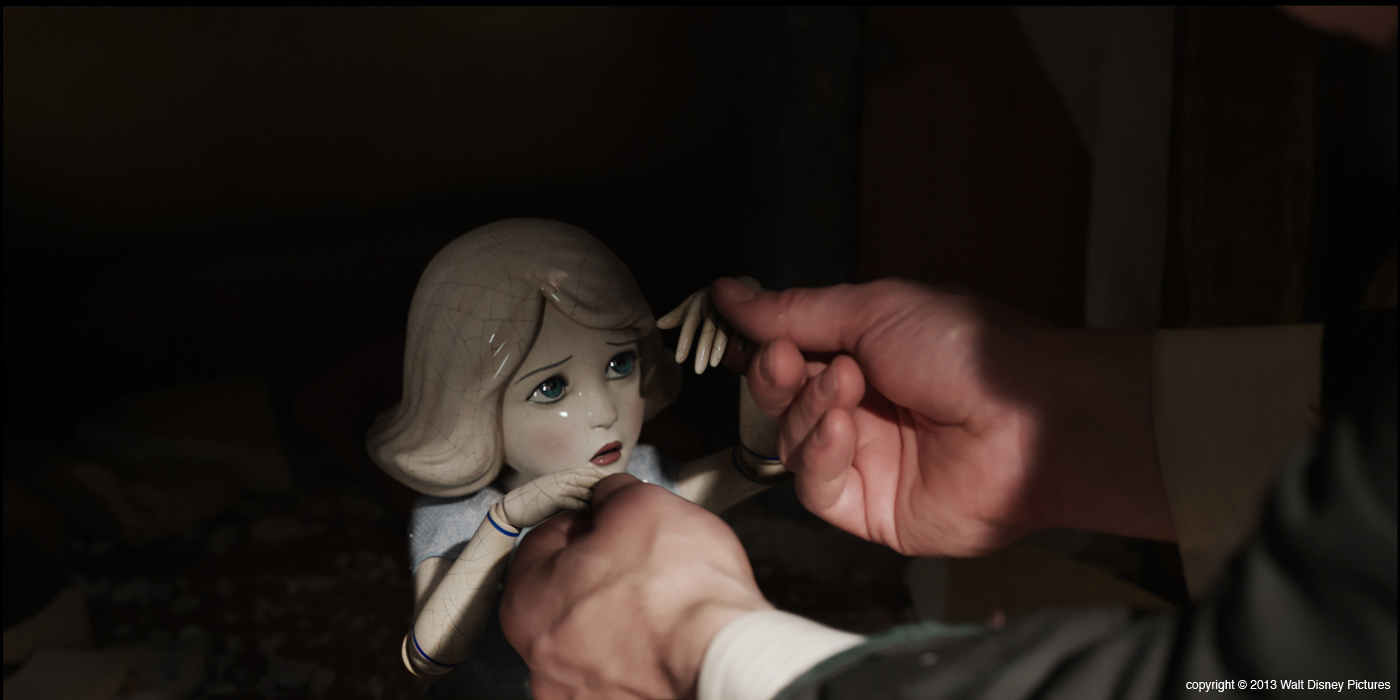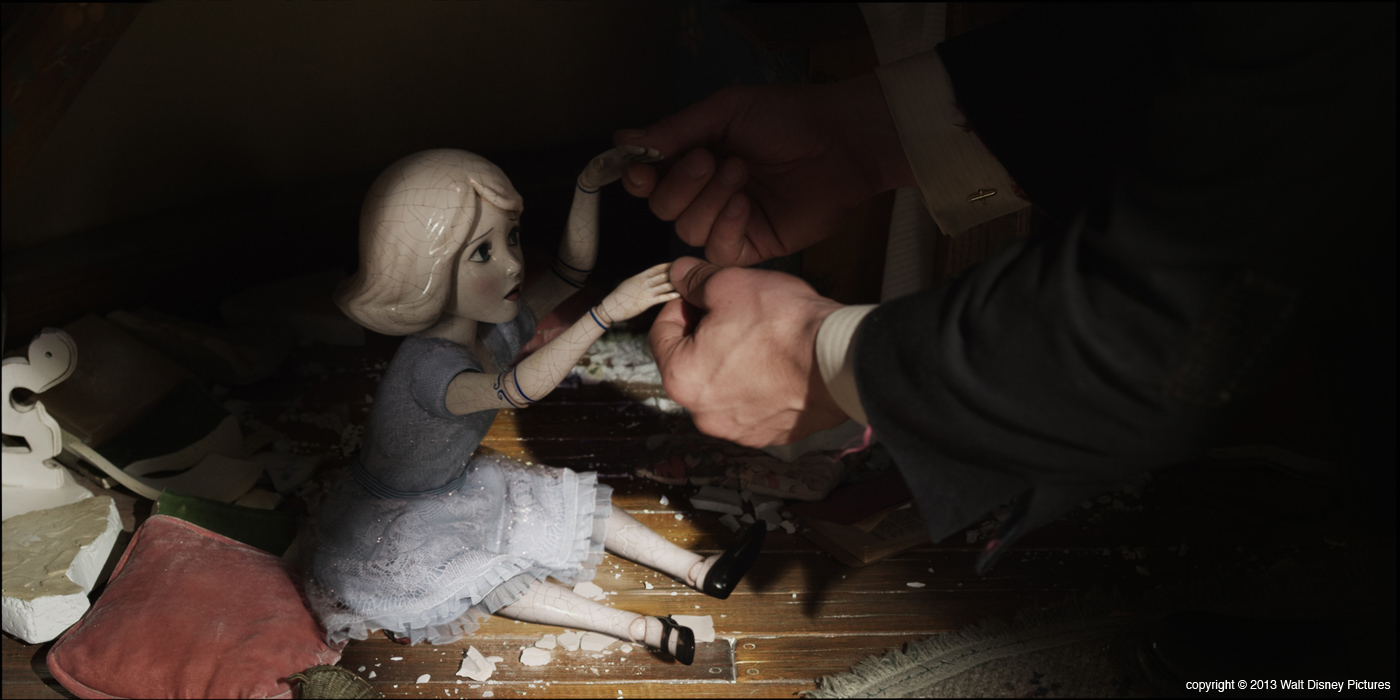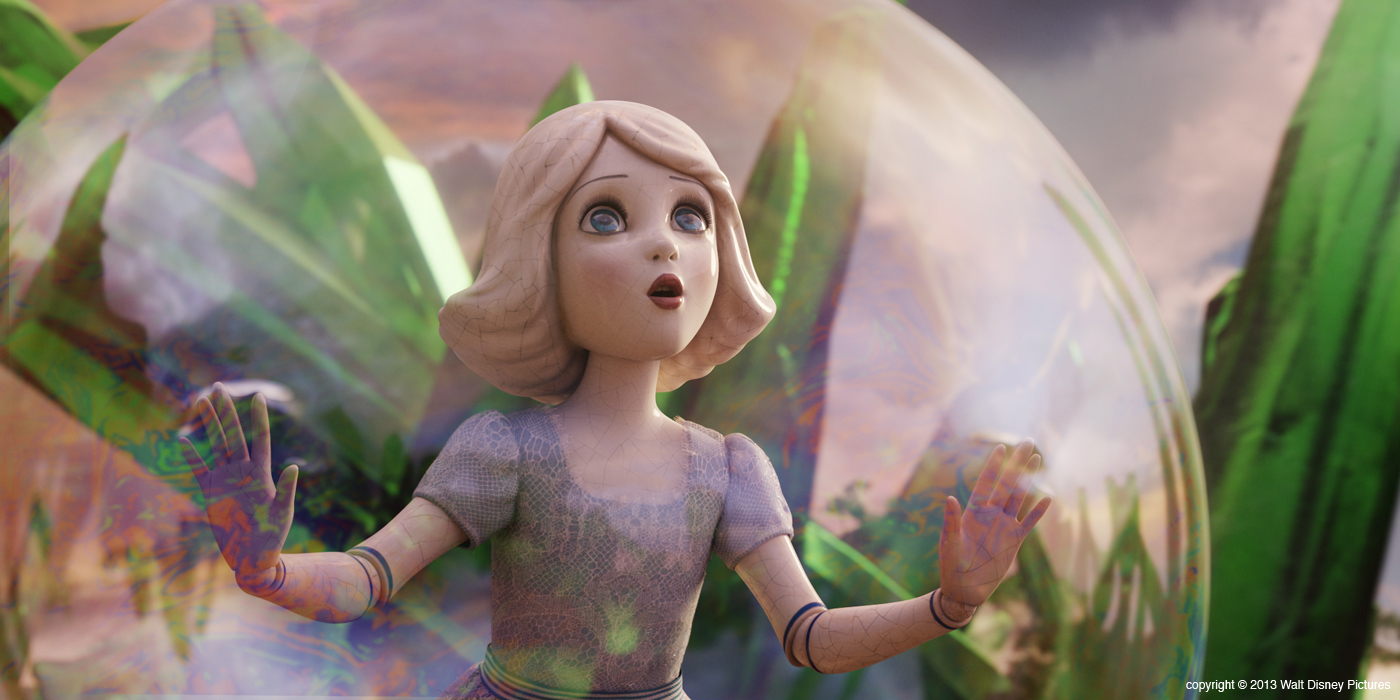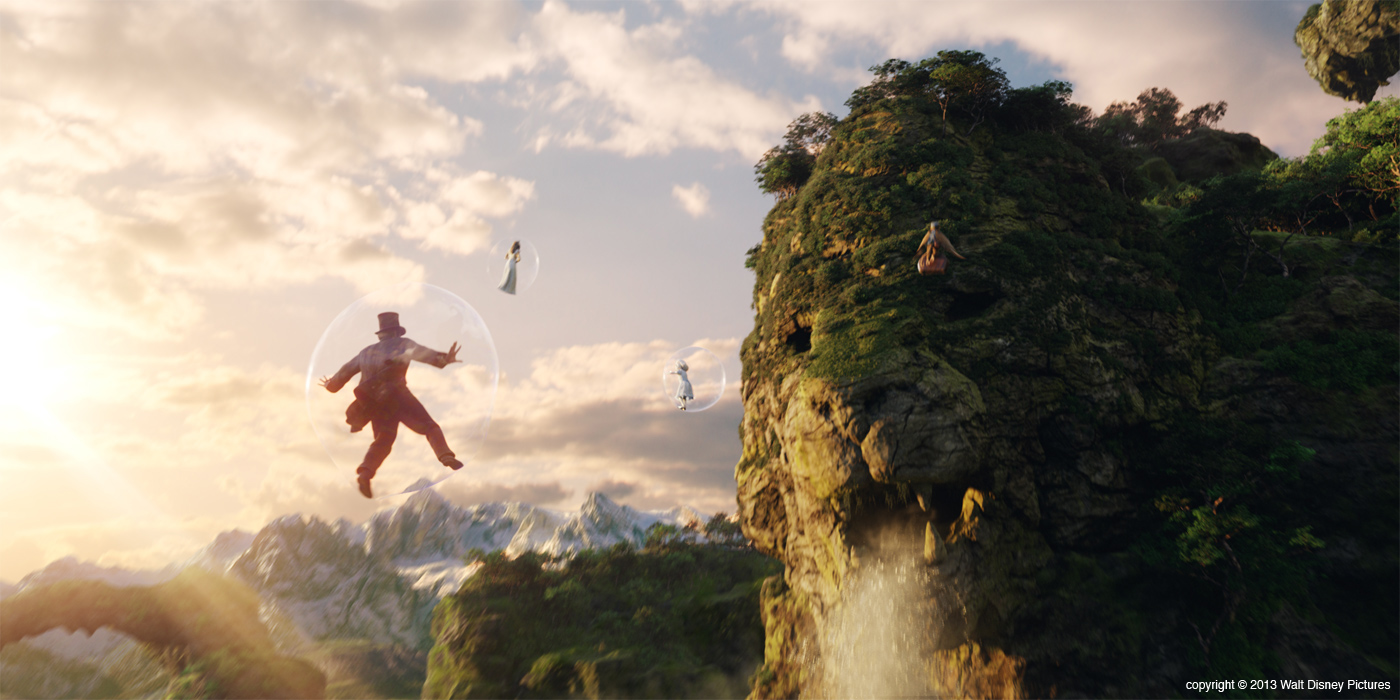Scott Stokdyk starts working in visual effects more than 17 years ago. He has worked on such films as BROKEN ARROW, THE FIFTH ELEMENT, TITANIC or GODZILLA. He then worked on the SPIDER-MAN trilogy of director Sam Raimi and win an Oscar for Best Visual Effects for SPIDER-MAN 2. OZ THE GREAT AND POWERFUL is its fourth collaboration with Sam Raimi.
What is your background?
While coming from a computer programming background, I’ve always been versed in art and photography. Early in my visual effects career, I worked as a digital artist and CG supervisor, learning from great creative VFX supervisors like Ken Ralston and John Dykstra.
The show is your fourth collaboration with director Sam Raimi. Can you tell us more about it?
I’ve had the opportunity to work for Sam for about 10 years now! I’m drawn to Sam’s work, because he is always so visually creative… but I love working with him because he is just an amazing, generous, collaborative person!
What was his approach about visual effects?
Sam is very hands-on with VFX… he works very early with storyboard artists, previsualization artists, and the visual effects team to design shots. Sam participates in the process, and is constantly trying to sculpt and shape the VFX to improve & work with the flow of his movie.
How did you work with The Third Floor for the previs process?
Sam Raimi worked directly with The Third Floor artists in editorial to bring his storyboards to life!
VFX would communicate with the previs artists any special needs for the shots, or issues.
Barry Howell led the Third Floor team at the start of the production, and Trevor Tuttle took over for the second half of the production, each contributing storytelling and VFX ideas.
Can you tell us more about the huge storm with the balloon?
On-set, we had John Frasier’s SFX team setup various rigs to give violent basket motion. They brought 100MPH fans to give intense on-set wind interaction as well.
For sky reference, we sent photographer Chris Hebert « storm-chasing » through tornado alley in central USA. His photography became the source for painted backgrounds & set the feeling for the background.
Luma Pictures generated the 3D tornado, and did the tornado shots. They made a lot of creative choices about depth & debris composition, while using Maya FumeFx and their own proprietary software to achieve the effects. Luma VFX Supervisor Vincent Cirelli did a great job balancing the look of the tornado with the art-direction notes that Sam had for the sequence.
The arrival of Oz is impressive. How did you create the huge environment?
Imageworks artists modeled rough areas, and prepped files to go to Steven Messing (Matte Painting Supervisor). Once matte paintings came back, the layout was a combination of blue screen James Franco photography, full CG foreground and midground, and projected matte painting backgrounds.
There is a great deal of digital landscaping in Oz… combining skills of modelers & layout artists, as well as effects artist, who helped with greens dressing & atmospheric enhancement. Adding layers of effects like snow, clouds, fog, leaves, etc… helped build out the depth & fill the 3D volume.
After his arrival, Oz meets Finley, a flying monkey. Can you explain to us about its design and creation?
Inspired by photography of Capuchin monkeys, we entrusted the illustration designs of Finley to Michael Kutche. His design incorporated other elements, and became the springboard for our CG version.
Sony Pictures Imageworks animation supervisor Troy Saliba guided modelers, riggers, and animators through the balancing of proportions and shapes to best suit his animation needs. Imageworks DFX Supervisor Francisco de Jesus oversaw the surfacing and rendering aspects of the design.
How did you manage the fur challenge?
Mark de Sousa led a team of artists who detailed out how every piece of the fur would clump & move, based on its interaction with the cloth simulation, and based on our artistic choices. Many volume design decisions were taken care of in fur, instead of the underlying surface model, which meant the cloth and fur team were very much part of the design process.
Can you tell us more about the creation of Emerald City?
Inspired by Art Deco & the work of Hugh Ferriss and architects of the ’20s and ’30s, Robert Stromberg and his art department came up with designs for the city. Artists from the Third Floor built some simple models, and then Imageworks artists took over to create the final city.
For detail reference, Imageworks artists took inspiration from the sketches of the art department’s Jonathan Bach… and then used the Imageworks building pipeline that has been developed since SPIDER-MAN.
How did you manage the flying monkey army of the Evil Witch?
The baboons were all-CG creations that were supposed to be the evil counterpart to the good monkeys in OZ (Finley). Again, the design was illustrated by Michael Kutche, but then overseen in CG by Troy Saliba and his team.
How did you create the wound on Theodora’s face when she cries?
Digiscope built on the prosthetic makeup work that KNB did. It involved precise Stereo 3D tracking and then timing choices with attention to the details of the textural reveal of the tears. Digiscope VFX Supervisor Dion Hatch supervised his team through their design choices & presented a lot of options to Sam Raimi to decide the rich feel of scarred flesh.
Oz and his friend travels many huge environments. What were the real size of the sets?
Whenever we could, there were sets built to fill from wall-to-wall in the Pontiac, Michigan Raleigh Studios stages. There were seven stages (the largest was 265′ x 115′) with about 150,000 square feet that were continually rotating sets & set construction.
The biggest exceptions would be whenever we had long stretches of the Yellow Brick Road, or traveling shots. The more distance the actors had to move, the less practical it was to build real sets, because they passed through them so quickly!
How did you create these numerous and large set extensions?
There was a huge acquisition process. Every set that was build and shot for the movie got an acquisition – we would do a Trimble scan to acquire the surface, and then also blanket the set with still photography.
As pieces of the movie were filmed, production designer Robert Stromberg would do « paint-overs », in which he would Photoshop design ideas on top of the blue screen photography. This became the blueprint for the rest on the movie…. After Robert went to direct MALEFICENT, we had other artists do similar things. Steven Messing took over as our production design contact, and he also supervised all the VFX Matte Paintings.
The Third Floor was also coming up with environment ideas, which then had to be reconciled with the paint-overs by the Imageworks VFX team.
The China Girl is really beautiful. How did you approach the lighting and render challenges?
China Girl was primarily lit with Image Based Lighting.
On set, the Assistant Director, K.C. Hodenfield allowed the VFX team to acquire two Spheron scans per lighting setup. Artists at Imageworks used these HDRI images in the lighting pipeline as a starting point, then took creative license to move light positions & vary intensities based on how the animation poses looked when lit.
Imageworks artist Kevin Souls did a terrific job setting up the China Girl lighting to work in many different environments, and to respond naturally to lighting level and placement adjustments.
A key part of the design was China Girl’s « crazing »… which is cracking on the surface of the porcelain that has dark ash accumulated inside. It gave a more complex textural feel to the surface, but had to be dialed down in the face to make her seem cuter.
Another design choice that was considered during her development was soft cloth vs. hard-surface cloth… we briefly considered having the dress be a upside down teacup, but simple testing showed how limiting that would be, and we also felt that the cloth-over-porcelain look would be softer and more appealing.
How was simulated his presence and interactions on-set with the actors?
For China Girl, on-set we had both the actor (Joey King) in a booth for recording & interaction with James Franco… and we also had a marionette, puppeted by Philip Huber for interaction and lighting reference.
For Finley the monkey, we had the actor (Zach Braff) on set, in a booth, and in many cases a live video conference setup we called Puppetcam, where James Franco & Zach should interact on set in real time. It was a monitor-on-a-stick puppeted in the position of the CG monkey’s head, where the 2 actors could see each other & talk live. This helped give the actors something better than a tennis ball on a stick to act against!
In post, Troy Saliba & his team of animators drew from Joey King & Zach Braff’s performances, as well as a wide range of other inspiration & direction to craft the CG performances.
There are many FX in this show. How did you create these elements such as water, smoke and witches powers?
The theme for OZ’s « magic » was that it was achievable practically… i.e. it would look like a very good mechanical effects person created it. In contrast, the witch’s magic was supposed to be a heightened version of OZ’s magic – more like a real magical version of his smoke-and-mirrors effects.
The water was a combination of Naiad and Houdini, done by Imageworks artist Spencer Lueders. Naiad was used for the underlying surface sim, and Houdini was used for the layers on top and below of that surface (foam, mist, bubbles, etc). Arnold was used to render with proper reflection & refraction.
The final sequence involved huge crowd. Can you tell us more about its creation?
The crowds were a combination of blue screen actors and Massive simulations.
Actors were acquired in costume during principal photography in Michigan, and then representations of these crowd people were modeled and textured.
Motion capture sessions were done at the Sony Motion Capture stage on the Culver City lot. These behaviors were incorporated into Massive agents by Will Cunningham at Imageworks.
How did you manage the stereo aspect for this show?
We chose to shoot in 3D with the 3Ality Technical Atom Rig and paired Red Epics. Dailies were in 3D, and VFX shots were turned over with the stereo pairs of images.
There was minimal cleanup on the native imagery, keeping the hero 2D eye untouched, while doing minor alignment adjustments on the other eye. Less than a dozen shots on the show were conversion shots, based on having to shoot a few shots with a single-camera, and a few depth choice adjustments.
Shots were first approved in 2D with Sam. Then Ed Marsh oversaw the final 3D versions, which were also approved by Sam.
Many effects layers were added in the foreground, mid ground, and background to layer in volume & fill in dead air space. Scott Willman was responsible for supervising the 3D work at Imageworks.
Can you tell us more about how you split the work amongst the vendors?
Sony Pictures Imageworks handled the primary animation (China Girl, Finley, Baboons) and many environments, for approximately 1100 of the almost 1500 shots…
Luma Pictures did the tornado shots, both exterior and interior of the twister. They also did a CG throne room and digital doubles for the witch fight sequence at the end.
Digiscope did a lot of composting shots, including the munchkin dance sequence.
Evil Eye Pictures and Method did compositing work as well.
With A Twist did preproduction and on-set work.
Legend helped with roto & paint work.
Paul LaFond was the VFX production’s in-house compositor, who ended up filling in a lot of gaps & becoming the glue between different pieces.
Reliance did a few plate compositing shots (i.e. grain reduction and/or extreme blowups)
What was the biggest challenge on this project and how did you achieve it?
The biggest challenges were design challenges… making the photography work with art department designs, and the needs of the shot… while still respecting ideas from previs.
What do you keep from this experience?
Working on this kind of fantasy world is a completely different experience than working on a VFX film based in the real world… everything has to be designed & created from scratch, rather than matching to or using real world footage. It was a unique and enjoyable design challenge.
How long have you worked on this film?
I worked for approximately 2.5 years… starting with script breakdowns & preproduction… to 7 months of shooting in Detroit, to about 1 year of post.
How many shots have you done?
There are almost 1500 VFX cuts in the movie.
What was the size of your team?
Over 500 artists worked on the film, which includes all of the VFX vendors.
What is your next project?
I don’t know yet… but I’d like it to be in 3D again because I enjoyed that aspect of Oz in particular. Design for 3D is its own art, and one that I think has a lot of potential for future creativity!
What are the five movies that give you the passion for cinema?
1) Sam Raimi’s « EVIL DEAD 2 » – my first introduction to Sam’s visually arresting & creative style.
2) Luc Besson’s « LEON: THE PROFESSIONAL » – fantastic cinematography & visual storytelling.
3) Peter Weir’s « WITNESS » – also fantastic cinematography & pacing.
4) Stanley Kubrick’s « THE SHINING » – every frame of this movie was so carefully composed & directed!
5) Tom Tykwer’s « RUN LOLA RUN » – this movie still feels fresh in its visual storytelling.
A big thanks for your time.
// WANT TO KNOW MORE?
– Sony Pictures Imageworks: Official website of Sony Pictures Imageworks.
© Vincent Frei – The Art of VFX – 2013

